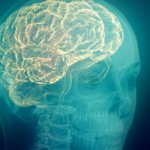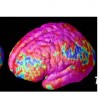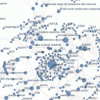Psychosis – New Study Links Gene Variant to Brain Structures
 A study published in last week’s Science magazine shows how genomic science and neuroimaging can be combined to deliver insights into cognitive disorders. As well as providing an intriguing look into the neurobiology of psychosis, the study reflects a growing trend toward inter-disciplinary research in the neurosciences,
A study published in last week’s Science magazine shows how genomic science and neuroimaging can be combined to deliver insights into cognitive disorders. As well as providing an intriguing look into the neurobiology of psychosis, the study reflects a growing trend toward inter-disciplinary research in the neurosciences,
What did the study show?
Psychosis is a disordered cognitive state that can include disorganized thoughts, delusions, or hallucinations. It is a common symptom of schizophrenia and has been linked to a number of brain areas, including the the dorsolateral prefrontal cortex (DLPFC) and the hippocampus. Schizophrenia is also strongly associated with a number of genes, and a recent genome-wide association study identified a single nucleotide polymorphism in ZNF804A as particularly important. Now, for the first time, a German research team has confirmed a link between ZNF804A and these brain structures. The group compared 115 participants who were either risk-allele carriers or non-risk-allele carriers and found differences in how their brains connect. For risk-allele carriers, connections were reduced within the DLPFC and also between left and right DLPFC . Conversely, risk-allele carriers showed increased connectivity between the DLPFC and hippocampal areas.
The study, primarily based at the University of Heidelberg, Germany, focused on a single nucleotide polymorphism (SNP) in ZNF804A (rs1344706)
Schizophrenia is a devastating, highly heritable brain disorder of unknown etiology. Recently, the first common genetic variant associated on a genome-wide level with schizophrenia and possibly bipolar disorder was discovered in ZNF804A (rs1344706). We show, by using an imaging genetics approach, that healthy carriers of rs1344706 risk genotypes exhibit no changes in regional activity but pronounced gene dosage–dependent alterations in functional coupling (correlated activity) of dorsolateral prefrontal cortex (DLPFC) across hemispheres and with hippocampus, mirroring findings in patients, and abnormal coupling of amygdala. , show that rs1344706 or variation in linkage disequilibrium is functional in human brain, and validate the intermediate phenotype strategy in psychiatry.
The study is important for a number of reasons. Firstly, it highlights the importance of connectivity (or dysconnectivity) as a neurobiological marker of schizophrenia. Secondly, it establishes ZNF804A as functional in the human brain. Thirdly, it is an example of how genome-wide association studies can align with anatomical data – to quote the authors, it affirms that “the pathophysiology of overt disease” can “mirror candidate gene effects”.
Functional Genomics and Big Picture Science
This third point is important to how we view science as a whole. Scientific research has traditionally relied upon reductionism as the primary means of discovery. To understand the world, reductionism tells us, we must strip it down to its barest elements. The sequencing of the human genome represents the ultimate triumph of this principle — the dis-assembly of an enormously complex living thing into its three billion molecular constituents. While unraveling the genomic structure ushered in a new era for biology and medicine, it laid bare a new problem—that of genomic function. Now that we have disassembled the machine, we have to figure out how to put it back together again.
Scientists have, in many ways, been forced to abandon reductionism and to look instead at the bigger picture – to see how things fits together. Increasingly we see large multi-disciplinary groups, each of which holds a different piece of the picture. In the current example, we have neuroimaging experts, who look at the gross structure of the brain, collaborating with geneticists, who look at m0lecules, and psychiatrists who look at behavior. These collaborations are exciting, because they integrate a number of different perspectives. Ultimately, this represents a triumph for “big picture” science.
| Print article | This entry was posted by connolly on May 12, 2009 at 2:47 pm, and is filed under G2C Online. Follow any responses to this post through RSS 2.0. You can skip to the end and leave a response. Pinging is currently not allowed. |










